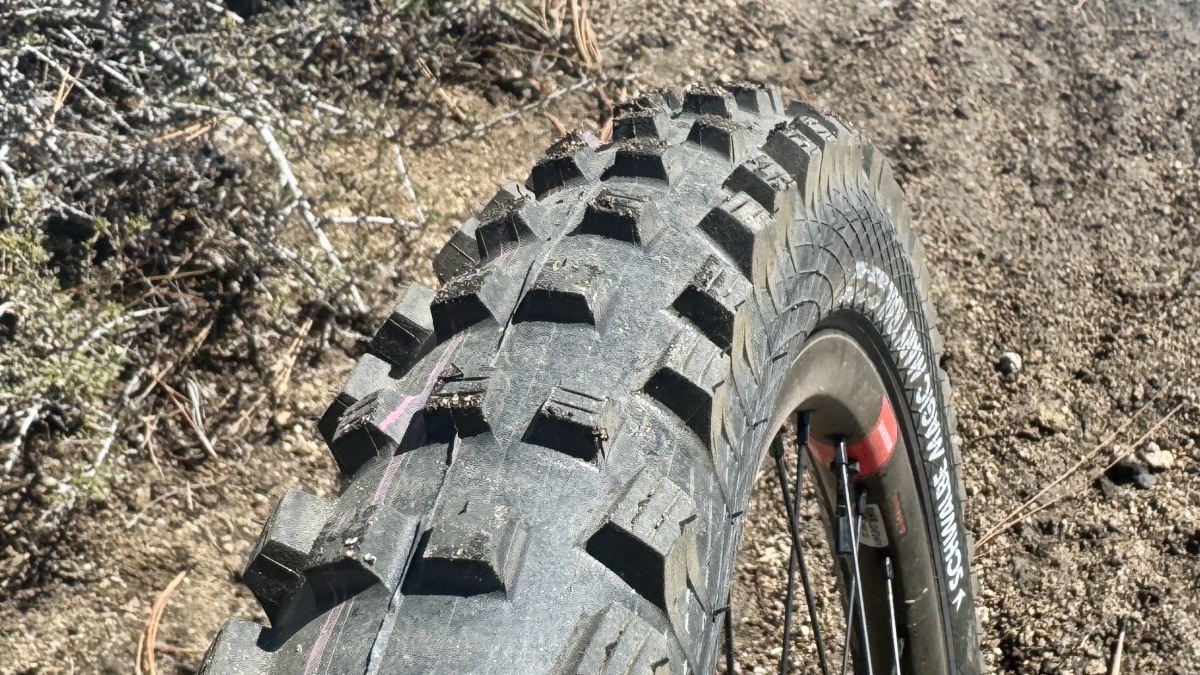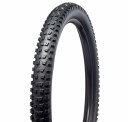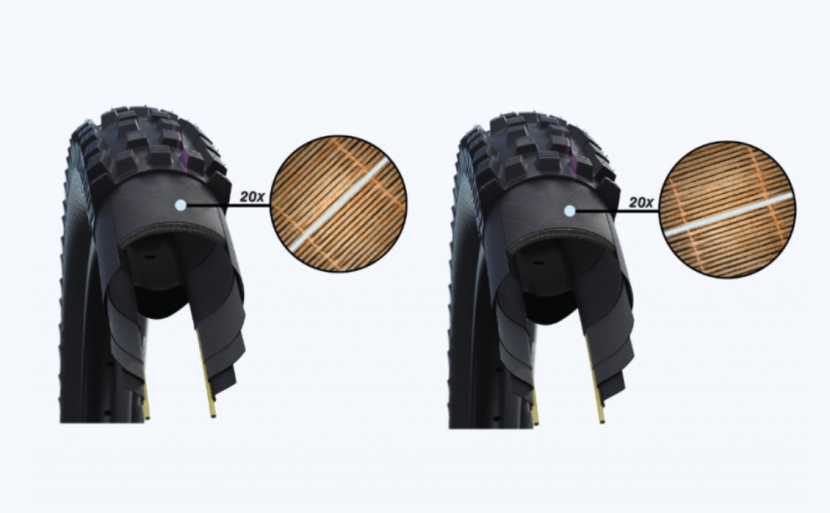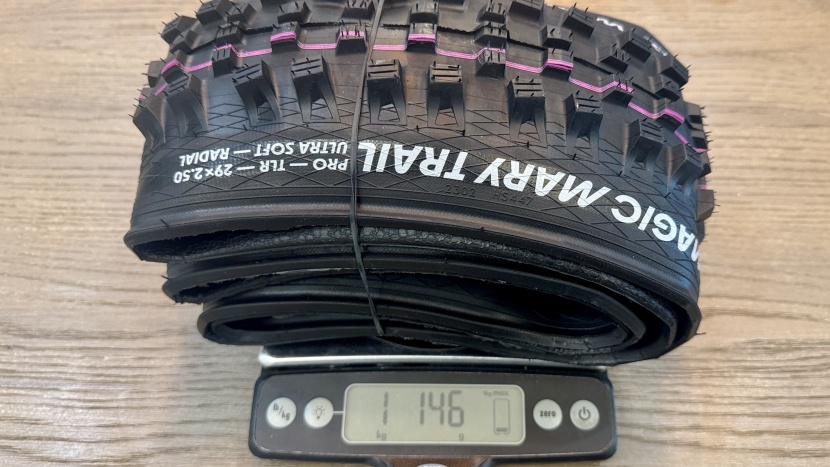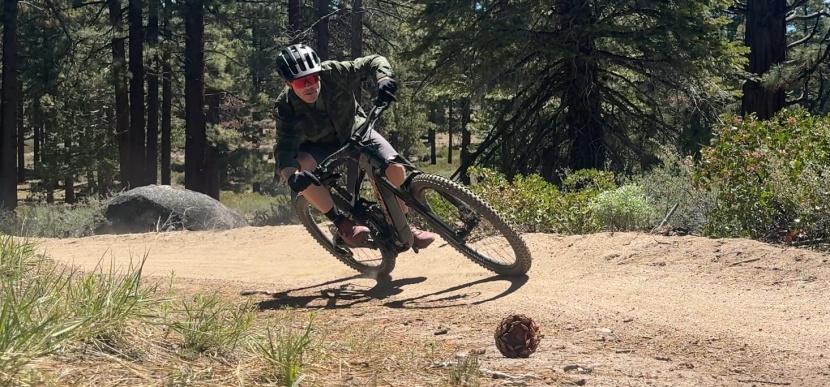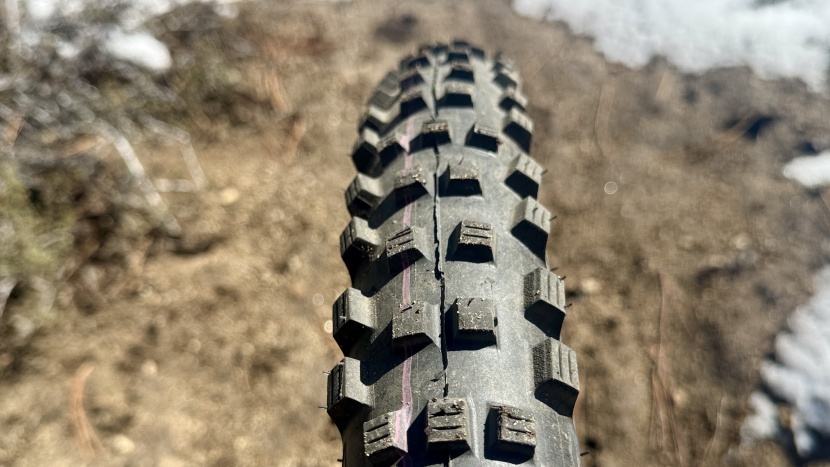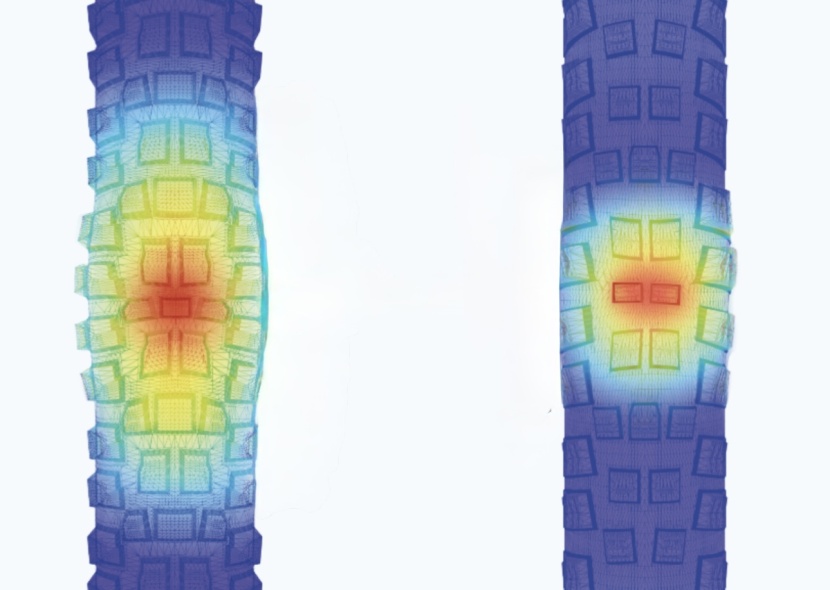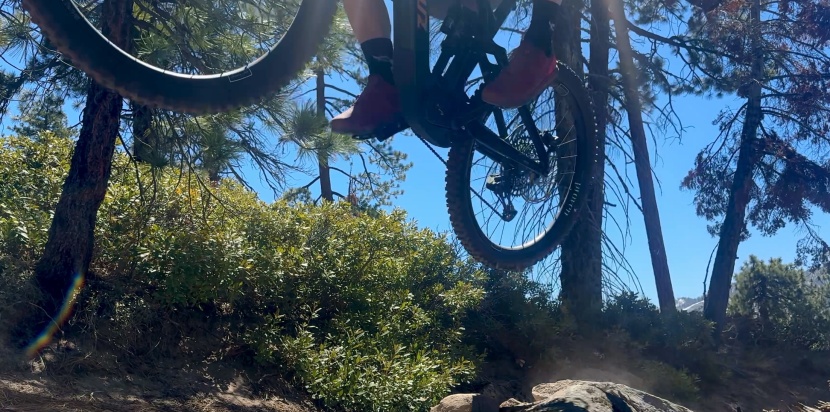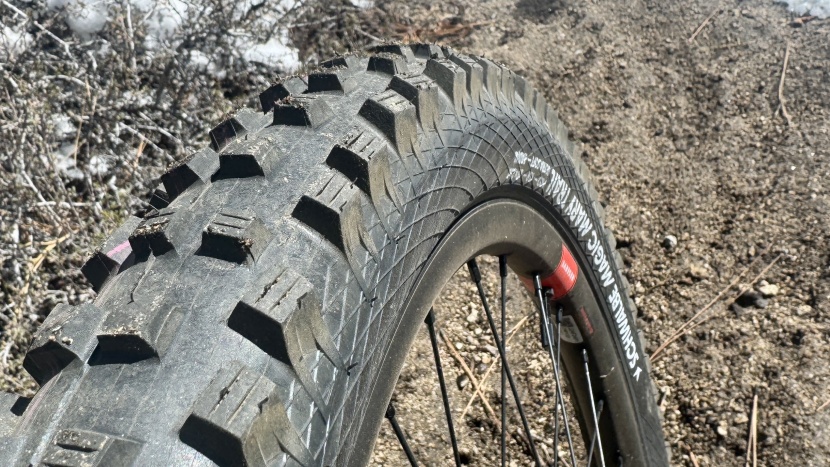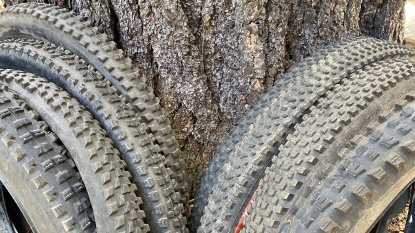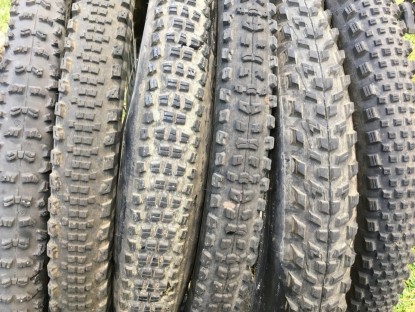
Our Verdict
Compare to Similar Products
 This Product
Schwalbe Magic Mary RADIAL Trail Pro | |||||
|---|---|---|---|---|---|
| Awards | Best for Extreme Traction | Best Overall Front Tire | Best Bang for the Buck Front Tire | Best Overall Rear Tire | Best Bang for the Buck Rear Tire |
| Price | $108 List $104.00 at Backcountry | $61.50 at Evo Compare at 4 sellers | $70 List | $54.00 at Amazon Compare at 3 sellers | $67.19 at Backcountry Compare at 2 sellers |
Overall Score  |
|||||
| Star Rating | |||||
| Bottom Line | Aggressive tread and more compliance in the carcass provide a reactive tire that sticks to the ground | Step up your game and start leaving your friends in the dust | Same great value, but improved grip and performance with a new rubber compound | A killer rear tire that does it all well | A versatile semi-aggressive rear tire with well-rounded performance and a reasonable price |
| Rating Categories | Schwalbe Magic Mary... | Maxxis Minion DHF 3... | Specialized Butcher... | Maxxis Aggressor 2.... | Specialized Elimina... |
| Cornering (25%) | |||||
| Pedaling Traction (20%) | |||||
| Braking Traction (20%) | |||||
| Rolling Resistance (15%) | |||||
| Longevity (15%) | |||||
| Installation (5%) | |||||
| Specifications | Schwalbe Magic Mary... | Maxxis Minion DHF 3... | Specialized Butcher... | Maxxis Aggressor 2.... | Specialized Elimina... |
| Size tested | 29" x 2.5" | 29" x 2.5" WT | 29" x 2.6" | 29" x 2.5" WT | 29" x 2.3" |
| Weight as tested | 1146g | 954g | 1123g | 950g | 945g |
| Front, Rear, or Both | Both | Front, Both | Front, Both | Rear | Rear |
| Casing Tested | Radial Trail Pro | EXO | GRID Trail | EXO | GRID Trail |
| Compound Tested | Ultra Soft | 3C Maxx Terra | Gripton T9 | Dual | Gripton T7 |
| Bead | Folding | Folding | Folding | Folding | Folding |
| Tread Count (TPI) | 67 | 60 | 60 | 60 | 60 |
Our Analysis and Test Results
What's all the hype about? Schwalbe simply changed the angle of the threads in their casing; it can't make that much difference. Well, I was wrong, and holy smokes, this tire is phenomenal! Schwalbe has always made excellent tires, some a bit more expensive than I like to trash over the course of a month or two, but throw out what you know about tire casing because this radial tire is a game changer.
I spend most of my time riding the 400 or so miles of single-track around Lake Tahoe and dip into the Southwest United States when the snow covers my backyard or the Northwest when high-season trails turn to kitty litter. This terrain is loose, rocky, nasty, and rarely what someone might call tacky. For most of the terrain I ride, Minions are the go-to rubber, Assegai up front when I want a bit more control, and maybe an Agressor on the rear if I'm feeling fast. Schwalbe tells us that the slight change of laying the thread casing at more obtuse angles results in a tire with more grip, comfort, and control; saying I was skeptical is an understatement. The radial carcass has less interdependence with the rest of the tire, allowing for a larger contact patch with better local conformity. This also means they're prone to a bit of squirm at regular pressures. To combat this, higher pressures are warranted, but I still find above-average grip at pressures 20% higher than normal.
Cornering
Do you like to drag your handlebars through a corner? The Magic Mary Radial will be your new favorite tire. The reason this tire hooks up so well is due to the way the casing is constructed. Schwalbe decreased the angle of overlap from a standard 45%, which creates a smaller overlap of casing material, resulting in the contact patch having more independence from the rest of the tire. This allows the tire to have more localized flex; Schwalbe says, “Radial tires offer approximately 30% more contact area than conventional tires at the same air pressure. Even if the air pressure is increased by 50%, the contact area is still 15% larger.” Because the tire can deform more selectively, your contact patch is softer and offers more adhesion.
If you're incredulous, you're not alone. I found it challenging to grasp the simplicity of the change and its dramatic impact on traction. In the mountain bike industry, we've been fed a lot of marketing jargon, and every component has promised to improve your ride and make you a gazillion percent faster. I'm here to separate the wheat from the chaff; this change has some serious merit. I ride most of my tires on 30mm rims with 22 psi up front and 24 in the rear, so I started with my known pressures and was positively wowed by how well I was stuck to the corners. I'm currently running Schwalbe radials at 25 psi in the front and 28 in the rear and still getting better traction than I do on other tires I'm currently running.
The tread design of the Mary is pretty aggressive, with wide spacing of the square center tread knobs and alternating 3, 2, 2, 2, 3 center blocks. The center knobs are widely spaced, with siping on every other set of knobs. The aggressive shoulder studs show up in tall pairs of stout blocks with siping on all. The open tread layout gives each set of studs a wide-open bite of trail, and you get the feel that each knob is making the most of its positioning. The shoulder studs have heroic grip in the corners, not a subtle amount of, “hmmm, that's a little better.” It's more like a “Whoa, dude, you've gotta try these tires” kinda grip. There is no dead zone as you lean into the corners, likely due to the siped row of three studs that are placed every fourth row. They transition perfectly into shoulders, giving the tire a confident, aggressive feel that excels in places where few tires do.
The shoulder studs are also canted slightly in the rotation direction, letting the tire excel in faster corners. The peaks of the shoulder knobs slope slightly towards the outside, which gives the tire additional bite as you push it further. The center rows of 2 and 3 knobs alternate with the shoulder lugs, but there's still quite a bit of open space in the tire. Somewhat reminiscent of a Specialized Eliminator but with taller, canted shoulder lugs. The deep tread and wide open spaces give the tire excellent performance in the mud and impressive handling in light snow.
The Magic Mary profile sets up fairly round on 30mm rims, but gnarly-looking knobs and wide open spaces certainly punctuate its appearance. There is more open space in this tire than you'd find on a Maxxis Minion or WTB Convict; its open space most closely resembles the Hillbilly mud-spike from Specialized. Getting this tire on edge feels different than most tires because you're not totally reliant on the knobs. Where you would normally just ride the skirt of the tire, the radial casing gives this tire so much conformity that you're still actively engaging center knobs.
In many ways, the tread pattern seems to matter less than what is happening with the casing. The Magic Mary gives us incredibly aggressive tread on top of the radial carcass for the best of both. The amount of hold this tire provides in the corners can't be overstated, especially in scrappy, loose conditions where you would think only a dirt bike would find purchase.
While the tread worked fine on harder trails, it's admittedly overkill. The conformity of the casing does make it feel less like you're riding the tops of your expensive knobs. In some ways, the tire is so extreme that I want to save it for the nastiest trails, but it's also fairly respectable at 1220 grams (our test tire weighted 1146 grams) in Trail Pro casing, so it doesn't preclude daily use, especially if you're running it on an e-bike. The rubber compound is the ADDIX Ultra Soft, which prioritizes grip and damping at the expense of rolling resistance and, to some degree, durability. The tire is also available in Gravity Pro casing with Addix Ultra Soft rubber, weighing 1340 grams, which I'm running as a rear tire.
Pedal Traction
The Magic Mary never lacks in pedaling traction, the tires large spiked knobs dig deep while the conformity of the casing makes it stick to just about anything you encounter. The tire has numerous edges, and these edges are all competing for grip. You're hard pressed to spin out like you might on a Maxxis Aggressor or something with more contious knobs. While the tire looks aggressive, it feels even more aggressive than it looks. This tire provides the best pedaling traction of any tire I've ridden, but that doesn't make it fast. The relentless hold is softened by the slightly higher pressure that you run, but it's far from fast rolling. On my analog bike, the tires felt a bit slow under power, and I had to adjust my output to make the most of the traction. Mounted to an e-bike, the Mary became heroic, chewing up the trail and propelling me up it. There is certainly a trade-off here, but if you have the power, you won't find more traction in any of today's tires.
Braking Traction
The Magic Mary with the right brakes (Mavens) feels like dropping an anchor. The tire grabs with heroic grip, and you're left with the forces of deceleration. The tall knobs dig into the soil and find purchase in all kinds of terrain. Even in loose material, the Mary seems to haul you backward in a way that very few tires can. There are moments when a skid is justified, like when you're breaking traction in a whip or need just a bit more angle on that corner, and you can get the tire to break loose, but it's temporary and fleeting. You don't get that controlled skid that you might find on a Maxxis Aggressor or Specialized Eliminator. This tire grabs and holds, even when you're on edge.
Rolling Resistance
If you're looking for a fast tire with low rolling resistance, the Magic Mary is not for you. You don't get all the benefits of traction and deformity without some downside, and rolling resistance is where the Mary suffers. Large, widely spaced knobs chug along, gripping everything they come into contact with. I found a higher-than-normal deformity in this tire, which is what gives it such incredible traction. However, achieving a normal deformity means increasing their pressure.
Longevity
There are some compromises here, and the Magic Mary isn't likely to last as long as a tire that with more densely packed knobs. The long, spiky knobs don't appear to be durable enough for many miles, and you can see the rubber shedding when riding on slick rock. Simple physics dictates that less rubber on the ground with the same weight bike and rider is going to wear faster. This is a data point, but it's not really a negative aspect of this tire. If your Ferrari can do 0-60 in under 2 seconds, is its fuel economy a consideration?
Installation
We've traditionally had issues with installing Schwalbe tires. Since back in the mid-2000s when I owned and operated a bike shop, I'd be reluctant to sell Schwalbe tires that I had to set up tubeless. Those days are thankfully behind us, and I was able to set up several of the new Schwalbe radial tires with a simple floor pump and some Orange Seal. The tires seated rapidly with little to no loss of sealant. There is a strange feeling when inflating the Schwalbe radials; I usually have one hand in the tire and the other on a floor pump. The pump-mounted pressure gauge and my hand are telling a different story, and it has to do with the casing of the radial tires. I thought my hand gauge was fairly accurate, but not so with the Schwalbes; when my hand said 20 psi, the pump read 24 psi. This is a learning experience, and I'm honestly excited to see more radial tires from Schwalbe and other brands.
Value
Schwalbe tires aren't synonymous with a low MSRP, but value is subjective. Crushing some of the lines I rode on these tires feels priceless, but there is a reality to how much we want to spend on bike parts. With a retail price of $108, they're still priced above most of the competition, but just barely. You must consider that if you're riding on hardpack or any pavement at all, the lifespan of these tires is likely to be shorter. With that said, if you're looking for flat-out traction that can wow you with grip, the Magic Mary is a spectacular deal. A Maxxis Assegai retails for around $18 less, but you can often find Maxxis tires at steep discounts. If you're like me, there's no point in saving twenty bucks to have less traction. It admittedly feels a bit strange to say this $108 tire is a good value, but if you've read this far, you probably know what I mean.
Conclusion
Some things in life are simply expensive, and boutique mountain bike tires are likely on that list. If you value grip and want to push the limits of your bike and body, the Magic Mary is a standout for its performance. This tire isn't for everyone, and despite getting a pair of them on a Santa Cruz Vala a few months back, they don't seem like a good OEM tire. This is specific, super high-traction rubber that excels in loose, muddy, and snowy conditions.


